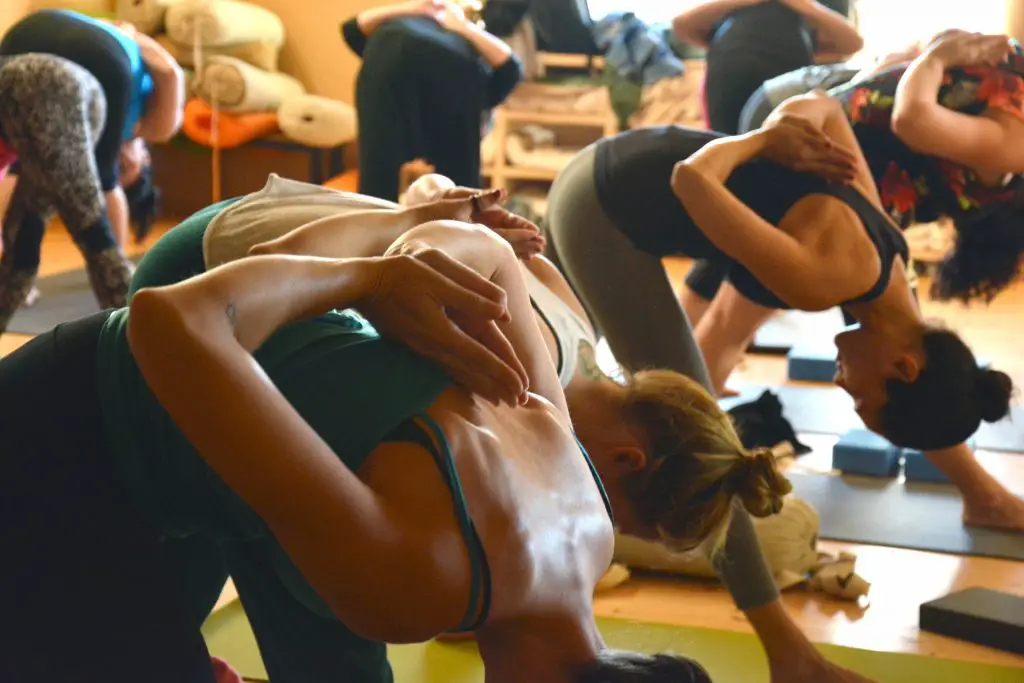When it comes to yoga, we often think or talk about asana—or the postures that we practice on the mat. However, yoga is more than just the physical practice and exercise method that we know of today. If you deep dive into its history, you’d find that it is about 5,000 years old and rich with spiritual and philosophical teachings.
The Yoga Sutras were authored by the Indian sage Patanjali. This classical text details the eight limbs of yoga—yama, niyama, asana, pranayama, pratyahara, dharana, dhyana, and samadhi. Each limb is considered a “step” towards freedom from the ego and true enlightenment.
To start us off, the yamas are ethical guidelines for living a meaningful and morally upright life. These are guidelines that consider our relationships with others, the communities we live in, and the world around us. Though the Yoga Sutras emphasizes on the concept of the self, its very first limb nonetheless acknowledges the self in the grander scheme of society and the world.
There are five yamas in the Sutras, but today we will have a look at the first one: ahimsa.
What is ahimsa?
In Sanskrit, ahimsa means “non- violence” or “non-harming.” What is the principle of ahimsa? To be clear, the principle of ahimsa emphasizes that no harm—whether physical, verbal, emotional—should be brought about to all living beings, including yourself.
But how do we truly practice ahimsa in our everyday life? Here are some tips on how to incorporate this yama on and off the mat.
1. Listen to your body during practice.
When practicing asana, it’s normal to get carried away in some postures. For example, you could get very excited about doing a headstand, handstand, or any challenging pose that you’ve been working to achieve.
Conversely, you could also get very competitive and pressured in a class with other people. Maybe the person next to you is already a seasoned or advanced practitioner, and this leaves you wanting to do extra chaturanga pushups, or forcing yourself into a backbend that your body isn’t ready for.

To practice ahimsa is to really listen to what your body needs, even if that would mean taking a modification in a certain pose, resting in child’s pose, or skipping a pose altogether.
This is especially crucial for yogis recovering from illness or injury, but also very important to remember even if you’re feeling fine in class.
2. Make time for self-care.
Are you really taking time to care for yourself? Remember that self-care doesn’t necessarily mean indulging in luxuries. True self-care is in the little everyday habits—from getting enough rest and sleep and nourishing yourself with good food, to journaling your thoughts and meditating.

Self-care may also mean switching off your electronics just to get a bit more quiet time, or maybe taking time to cultivate a healthy hobby like drawing or gardening.
Having a busy, stressful, and fast-paced lifestyle can be challenging, and it’s easy to forget ourselves in the mess of it all. Ahimsa reminds us to be mindful, to take a step back, and remember that self-care and slowing down.
3. Check in with your thoughts.
Practicing mindfulness means being aware of the present moment and being aware of your own thoughts. Observe your thoughts and notice if these thoughts are harmful and negative and take time to discern whether these negative patterns spill over to your actions and relationships with others.
The key is not to force yourself into toxic positivity or try to force yourself into emotions that you are clearly not feeling. Simply observe these thoughts, recognizing your ability to observe and detach away from them rather than steeping yourself in them. At the same time, know what you can control and how you can react in a given situation.

Remember that mindfulness is a practice and mental health is a journey as well, and ahimsa takes conscious effort. If you still do not see any improvement in your thoughts, consider seeking professional help and advice too—this is also part of self-care!
4. Do everything with love.
How you do anything is how you do everything—and that’s something we keep in mind on the mat (which is why it’s so important to be gentle with ourselves during our asana practice). Let love be the center of what you do, and remind yourself that love is the center of your daily life.

The next time you spend time with your spouse, sibling, or child, maybe ask yourself how you can be more loving towards them. When it comes to your career or a project you’re currently working on, let your love and passion be that which drives your work. And of course, the next time you find yourself alone in your thoughts, see how you can depart from a place of harm and negativity and come into a place of self-care, compassion, and love.




